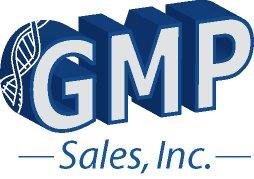What are Binding Assays?
Binding assays are those nifty lab techniques we use to explore how different molecules, like proteins, DNA, or small chemicals, interact with their partners. We rely on these methods across various fields like biology, biochemistry, pharmacology, and drug discovery. They help us figure out how strongly these molecules stick together and how fast they come together.
Here's a brief overview of binding assays:
Purpose: Binding assays are used to determine if and how strongly two molecules interact with each other. These interactions can be between a wide range of molecules, such as:
Protein-protein interactions
Protein-small molecule interactions (e.g., drug-protein binding)
DNA-protein interactions
Ligand-receptor interactions
Protein-protein interactions: These assays can help assess how different proteins interact with each other, which is crucial for understanding various cellular processes.
Protein-small molecule interactions (e.g., drug-protein binding): Binding assays are widely used in drug discovery to evaluate how small molecules (like potential drugs) interact with target proteins.
DNA-protein interactions: These assays can be used to investigate how proteins interact with DNA, which is fundamental in processes such as gene regulation and DNA replication.
Ligand-receptor interactions: Binding assays are also employed to study how ligands (molecules that bind to receptors) interact with their respective receptors, which is essential in signaling pathways and pharmacology.
Principle: The basic principle of a binding assay involves labeling one of the interacting molecules, either the ligand (the molecule that binds) or the target (the molecule that is bound to). This labeling can be done with radioactive isotopes, fluorescent tags, or other markers.
What are some methods of binding assays? Types of Binding Assays are:
Radioactive Binding Assays: These use radioactive tracers to measure the binding of a labeled molecule to its target.
Fluorescence Binding Assays: These involve fluorescently labeled molecules, and changes in fluorescence are used to monitor binding.
Surface Plasmon Resonance (SPR): A label-free technique that measures changes in refractive index when molecules bind to a sensor surface.
Enzyme-Linked Immunosorbent Assay (ELISA): Commonly used for antibody-antigen binding studies, where enzymes produce a detectable signal.
Microscale Thermophoresis (MST): Measures changes in thermophoretic mobility of molecules as they bind.
Isothermal Titration Calorimetry (ITC): Measures heat changes during binding to determine binding affinity and thermodynamics.
Biacore Assays: Utilizes SPR technology for real-time monitoring of biomolecular interactions.
However, it's worth noting that while radioactive isotopes and fluorescent tags are common labeling methods, there are also other labeling techniques available, depending on the specific assay and its requirements. These may include biotin-streptavidin labeling, enzyme-linked methods, or even non-radioactive isotopic labels like stable isotopes.
Applications:
Drug Discovery: Binding assays are crucial for identifying potential drug candidates and assessing their binding to target proteins.
Molecular Biology: They help study DNA-protein interactions, transcription factor binding, and more.
Immunology: ELISA is widely used for antibody-antigen interactions.
Biochemistry: To understand protein-protein interactions and enzyme-substrate binding.
Data Analysis: Binding assays provide data that can be analyzed to determine parameters like binding affinity (Kd), binding kinetics, and stoichiometry of the interaction.
Binding assays are often used in High-Throughput Screening (HTS) to rapidly test large libraries of compounds for their binding to a target, facilitating drug discovery. Binding assays are valuable methods for understanding the molecular interactions that underlie biological processes and for developing new therapeutics or other innovations. Their capacity to provide accurate and quantitative data equips scientists with the tools to assess the strength and specificity of these interactions, propelling us ever closer to groundbreaking discoveries in medicine and beyond. In essence, binding assays serve as the contemporary essential for research, shedding light on the intricate choreography of molecules that not only deepens our comprehension of the natural world but also holds the key to shaping the future of healthcare.

